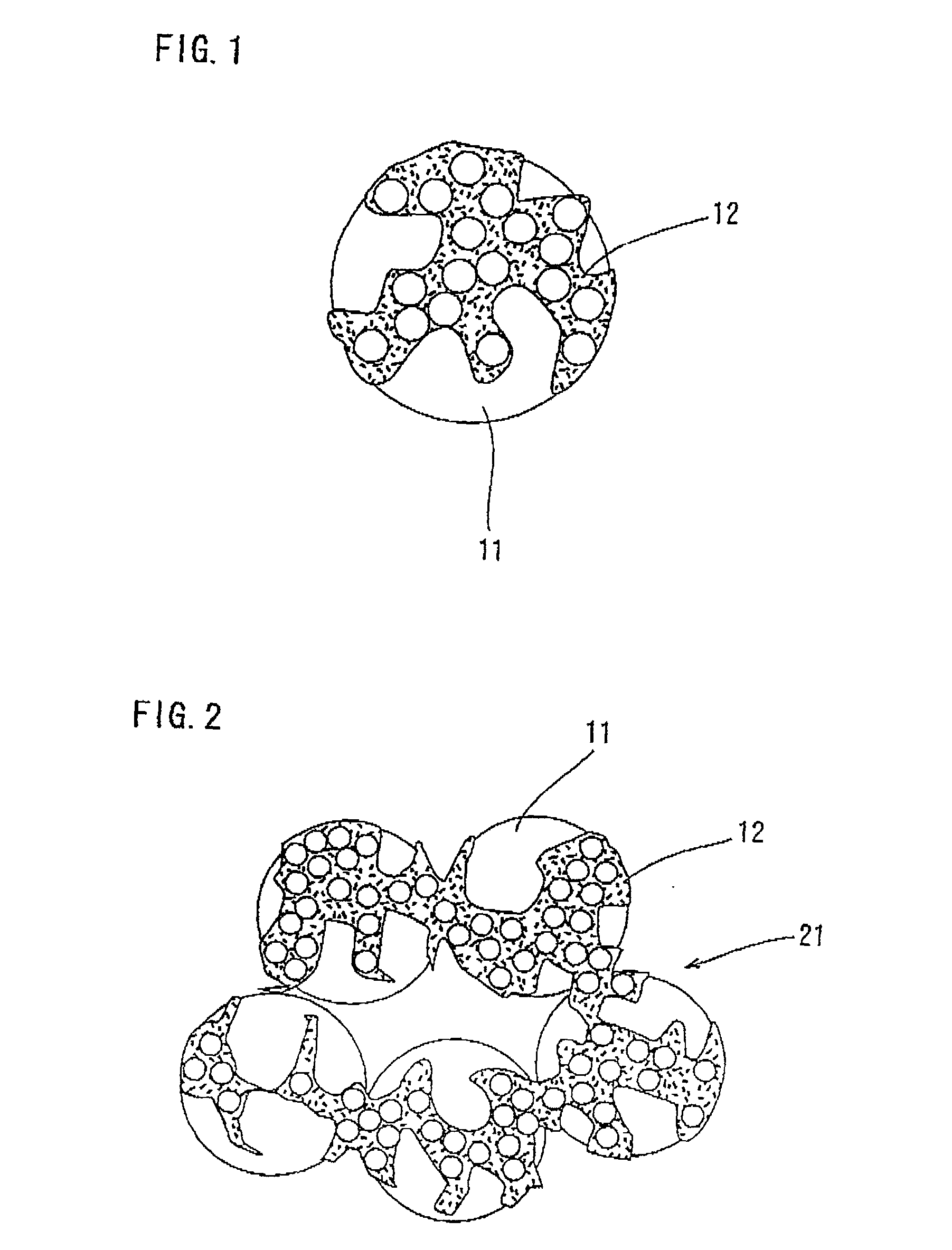Composite catalyst for solid polymer electrolyte type fuel cell and processes for producing the same
- Summary
- Abstract
- Description
- Claims
- Application Information
AI Technical Summary
Benefits of technology
Problems solved by technology
Method used
Image
Examples
example 2
[0081] The composite catalyst A obtained in Example 1 was allowed to stand for 120 minutes in a mixed gas atmosphere consisting of 3% fluorine gas and 97% nitrogen gas. Thus, a treatment for partly replacing the non-fluorine atoms bonded to the carbon atoms of P(VdF-HFP) by fluorine atoms was conducted to obtain a composite catalyst B. An electrode was produced and incorporated into a single cell for fuel cells in the same manner as in Example 1, except that the commosite catalyst B was used. Thus, a cell B was obtained.
example 3
[0086] The carbon-supporting platinum (Pt / C) (10V30E, manufactured by Tanaka Kikinzoku K. K,; Valcan XC-72 having 30 wt % platinum supported thereon; average particle diameter of the carbon, 30 nm; average particle diameter of the platinum, 2.4 nm) of 7 g was mixed with 30 g of a solution (a) which was consist of a cation-exchange resin solution(5.0 wt % Nafion in a mixture of lower aliphatic alcohol and alcohol manufactured by Aldrich Inc., main solvents are ethanol)of 15 g and ethanol of 15 g. This mixture was filtered to obtain the carbon-supporting platinum having the solution (a) adherent to the surface thereof. Subsequently, this mixture was dipped into a butyl acetate as solution (b) and the resultant mixture was stirred for 1 hour. The particles were then dried to obtain a composite catalyst D consisting of the catalyst particles and the cation-exchange resin deposited on the surface thereof. After this step, the composite catalyst obtained was weighed to determine the amoun...
example 4
[0094] First, carbon-supporting platinum (10V30E, manufactured by Tanaka Kikinzoku K. K.; Valcan XC-72 having 30 wt % platinum supported thereon; average particle diameter of the carbon, 30 nm; average particle diameter of the platinum, 2.4 nm) was immersed at a reduced pressure of 1 Torr or lower in a PVdF-NMP solution (a) of 5 wt % PVdF. Thereafter, the excess PVdF-NMP solution (a) was removed from the mixture by suction filtration. The resultant platinum-supporting carbon particles having the PVdF-NMp solution (a) adherent thereto were immersed in water as solution (b) to extract the NMP. Thereafter, the carbon particles were subjected to suction filtration to remove water therefrom and then dried at 100.degree. C. to prepare carbon-supporting platinum whose surface was partly covered with the PVDF in a net form. Subsequently, the carbon-supporting platinum having the net-form PVdF deposited thereon were immersed in a solution (a') of a cation-exchange resin solution (5 wt % Nafi...
PUM
| Property | Measurement | Unit |
|---|---|---|
| Phase separation | aaaaa | aaaaa |
| Hydrophobicity | aaaaa | aaaaa |
Abstract
Description
Claims
Application Information
 Login to View More
Login to View More - R&D
- Intellectual Property
- Life Sciences
- Materials
- Tech Scout
- Unparalleled Data Quality
- Higher Quality Content
- 60% Fewer Hallucinations
Browse by: Latest US Patents, China's latest patents, Technical Efficacy Thesaurus, Application Domain, Technology Topic, Popular Technical Reports.
© 2025 PatSnap. All rights reserved.Legal|Privacy policy|Modern Slavery Act Transparency Statement|Sitemap|About US| Contact US: help@patsnap.com



